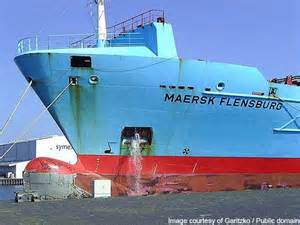 In an important victory for the Natural Resources Defense Council (NRDC) and other environmental groups that had filed suit against the United States Environmental Protection Agency, the 2nd United States Circuit Court of Appeals on Monday ruled that the Agency had acted “arbitrarily and capriciously” when it decided in 2013 to promulgate lower international standards favored by the international maritime industry in governing the discharge of potentially invasive exotic organisms rather than deploy more expensive capabilities that readily existed for more effective treatment of ballast water.
In an important victory for the Natural Resources Defense Council (NRDC) and other environmental groups that had filed suit against the United States Environmental Protection Agency, the 2nd United States Circuit Court of Appeals on Monday ruled that the Agency had acted “arbitrarily and capriciously” when it decided in 2013 to promulgate lower international standards favored by the international maritime industry in governing the discharge of potentially invasive exotic organisms rather than deploy more expensive capabilities that readily existed for more effective treatment of ballast water.
Using its authority under the federal Clean Water Act, the Court ruled that the Environmental Protection Agency should have considered onshore facilities for the treatment of ballast water rather than focus strictly on pollution controls aboard ships, where a lack of space to host such equipment limits their overall effectiveness in ensuring that exotic plants and animals are not dumped with ballast water discharge.
Ships take on and discharge ballast water in quantities estimated at more than 21 billion gallons (79 billion liters) annually in U. S. waters. Ballast water is utilized by ships to maintain stability and to compensate for changes in weight. During the process of uploading ballast water, ships sometimes inadvertently pick up exotic plants and animals that are than transported to other water bodies thousands of miles away and released as ships dump ballast water in order to navigate shallower water or to compensate for increased fuel or cargo loads.
Since the opening of the St. Lawrence Seaway which included the completion of an elaborate system of locks and canals that allow deep draft ships to complete the journey from the North Atlantic Ocean into the Great Lakes, more than 180 exotic, often invasive, plant and animal species have arrived in region. These include zebra and quagga mussels, sea lamprey and an increasingly large array of other exotic plants and animals that have had a significant harmful impact on the Great Lakes as well as on inland lake and stream aquatic ecosystems throughout the region.
